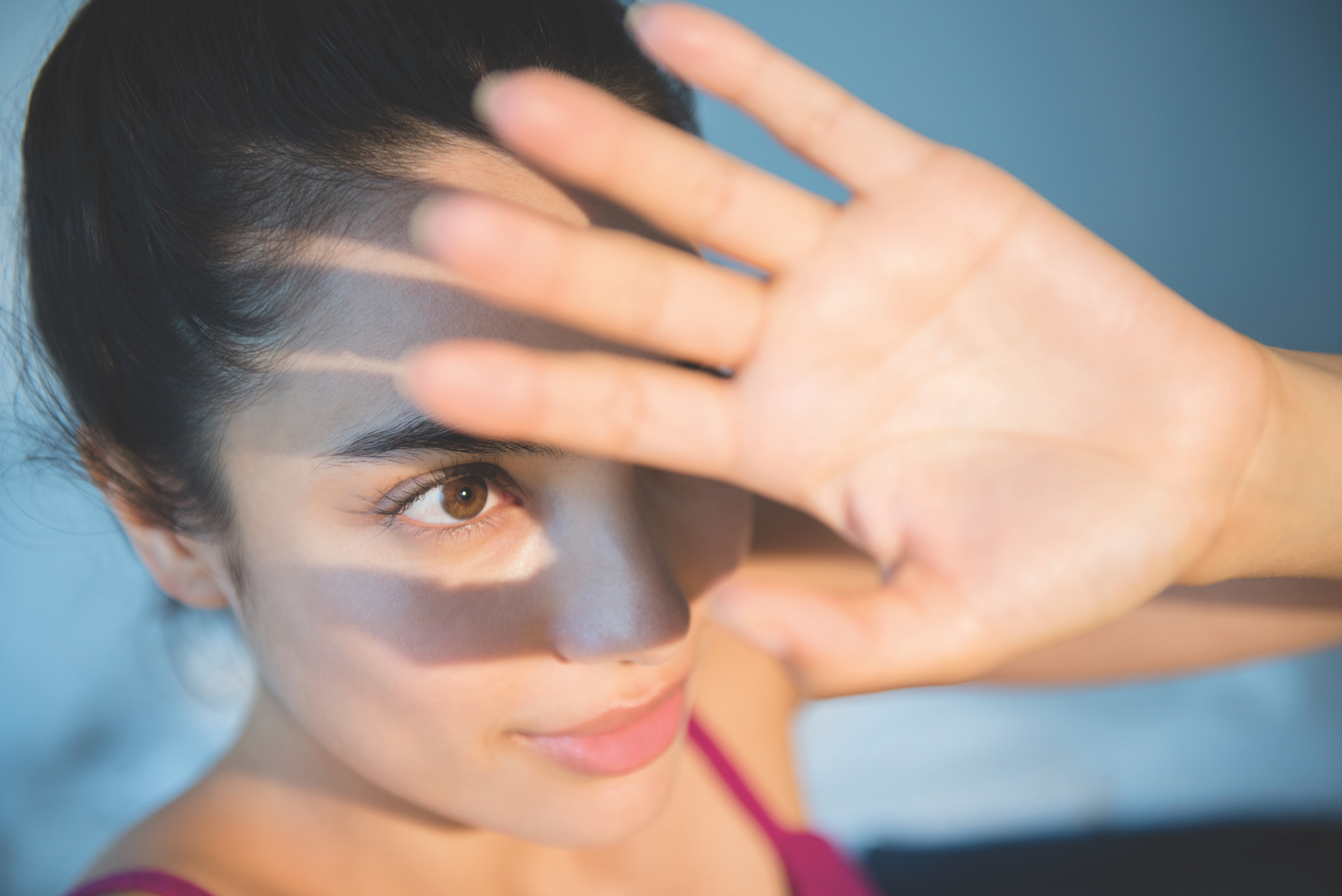Lights for Anchor Comfort: An Approach to Easing News Desk Eye Strain
When it’s a contrast rather than a brightness problem

Lighting experts approach their work in much the same way physicians do. Both use an Empirical-Rational approach, which has guided medical professionals since the days of ancient Greece. The method involves first listening to the patient’s (or client’s) complaint and observing the problem, then, through the lens of a well-informed and specialized insight, they diagnose the cause of the problem. Assuming a cure is achievable, they then recommended a course of treatment to correct the problem. This approach works for almost anything.
Since lighting problems, unlike some physical maladies, don’t heal themselves, nothing gets resolved until someone first notices the problem and reports it. If you don’t have someone on staff who regularly checks the lighting, there’s another dependable source who will probably tell you when something’s not right—the anchors.
I’m certainly guilty of delivering an eye-roll upon hearing a complaint instead of listening properly. What I’ve come to realize is that every legitimate complaint should be welcomed as useful information in a puzzle that needs to be solved. And who doesn’t enjoy unraveling a good mystery? However, as Agatha Christie would note, things aren’t always as they appear. In one case, insistent calls from a general manager about “bad lighting” turned out to be a poorly adjusted monitor in their office. The resolution required more diplomatic tact than lighting skills.
The reports that I get about lighting problems often include images, which attest to something gone wrong. They typically come from news directors and chief engineers who know what they’re talking about. An interesting common thread is that the initial complaint often originates from on-camera talent.
Viewer Scrutiny
Anchors are good at spotting problems. They’re the proverbial “canary in the coal mine,” providing a warning system for spotting problems. With an understandable pinch of self-interest, anchors care about how they look because their audience cares. Loyal viewers can spot (and will complain about) a hair out of place on a wide shot. This level of scrutiny can spot problems that might otherwise elude the scrutiny of scopes and meters.
As for lighting equipmeånt problems, there are fewer issues today. The advent of LED lighting has increased day-to-day dependability. Although solid-state lights are more complex than incandescent, they require no daily maintenance once they’re up and running. Compared to replacing burned out tungsten-halogen lamps every few hundred hours, LED lights are nearly maintenance-free. We’ve entered a period of “set them and forget them” with LED—at least most of the time.
As for complaints from on-camera talent, a common one is about how bright the studio lights seem. This is often heard following re-lights with daylight-balanced LED. Daylight color temperature light (5600K) seems brighter than incandescent (3200K) because our eyes evolved under daylight. Fortunately, we can ease this discomfort by adding a “comfort light.”
The professional video industry's #1 source for news, trends and product and tech information. Sign up below.
Human eyes can handle a remarkable range of brightness. Between our eye’s automatic iris and adaptive changes to its light-sensitive cells, we can see a brightness range of a million-to-one. So where does the discomfort come from?
Today’s studios are lit at a relatively low level—around 60 fc (foot candle). This is lower than many retail stores, let alone exterior light levels, which can reach 10,000 fc. Intensity isn’t the problem here. It’s the “relative” brightness as compared with the visual background that makes studio lights seem bright. That makes it a contrast, rather than a brightness problem.
For Example
In broad daylight, car headlights don’t look bright. Yet the same headlights are blindingly bright in the context of a dark road. What’s different is the “relative” brightness between the headlights and their background.
That’s what’s happening in a dark studio with talent lights. The contrast of the lights with the studio’s darkness make them “seem” bright. You may not be able to change the brightness of the lights on an anchor desk for numerous reasons, but you can control the depth of darkness by selective lighting. The solution is to simply light surfaces behind where the anchor is looking.
Comfort lights should focus on vertical surfaces within the anchor’s sightlines.
Comfort lights ease an anchor’s visual task by brightening the dark areas that are within their field of vision. Comfort lights should be focused only where the anchor is “looking,” rather than what the camera sees. This technique retains the intended lighting on the anchor desk, while easing the anchor’s task of looking at the camera and reading the teleprompter under studio lights.
Specifically, comfort lights should be focused on vertical areas (preferably with a medium to high reflectance value) such as the back wall of a studio. They may also illuminate the cameras themselves and even the floor crew, provided the lighting angles are steep enough to avoid lens flares and visual glare for the floor crew. These additional lights can sometimes do double-duty by lighting behind-the-scenes “bump” shots. Relatively low intensities (20–30 fc) will achieve the desired results, assuming average reflectance of the background being lit.
Because comfort lights aren’t focused at critical on-camera areas, top-quality lights are not required. So long as they don’t flicker or tinge the studio with undesirable colors, almost any working light will do. Even zoned work lights could work. What’s important is visually opening an otherwise dark cavern with light. As for the surfaces to be lit, neutral colors are best. Avoid comfort lighting highly saturated colors, such as chroma-key walls, to reduce possible color contamination of the main set.
Not all lighting problems can be resolved as easily as the example involving comfort lights, but all can be addressed once they’re recognized. And once pointed out, a methodical approach can provide the appropriate prescription to cure whatever ails your lighting.
Bruce Aleksander invites comments and topic suggestions from those interested in lighting. He can be reached at TVLightingguy@hotmail.com.
Bruce Aleksander is a lighting designer accomplished in multi-camera Television Production with distinguished awards in Lighting Design and videography. Adept and well-organized to deliver a multi-disciplined approach, yielding creative solutions to difficult problems.

